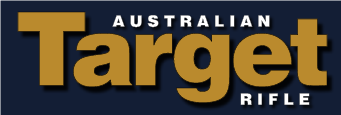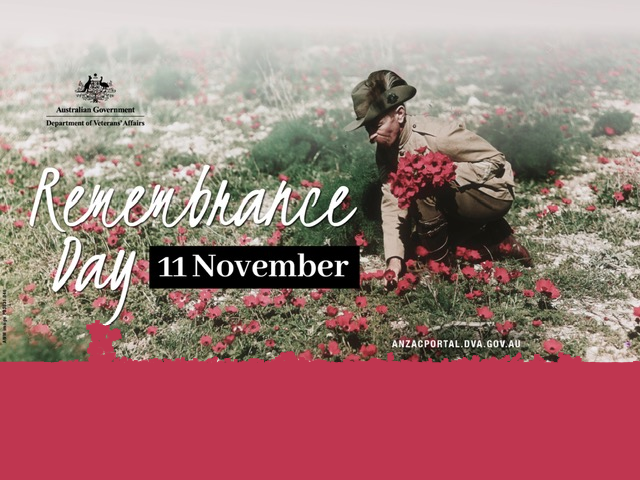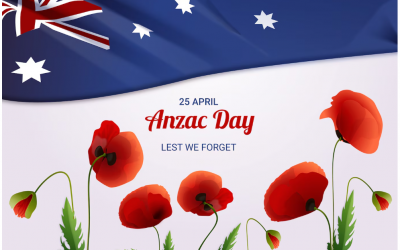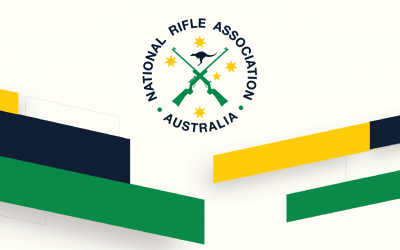‘RIFLE SHOOTERS REMEMBER THOSE CLUB MEMBERS WHO SERVED OUR NATION DURING ALL CONFLICTS’
by
BRUCE A. R. SCOTT, CSC, ADC
Remembrance Day falls on 11th November each year.
On the 11th hour on the 11th day of the 11th month, a minutes’ silence is observed and dedicated to those soldiers who died fighting to protect the nation.
In Australia and other allied countries, including New Zealand, Canada and the United States, 11th November became known as Armistice Day – a day to remember those who died in the Great War. The day continues to be commemorated in allied countries.
After World War Two, the Australian Government agreed to the United Kingdom’s proposal that Armistice Day be renamed Remembrance Day to commemorate those who were killed in both World Wars. Today the loss of Australian lives from all wars and conflicts is commemorated on Remembrance Day.
On every Remembrance Day, the National Rifle Association of Australia (NRAA) club members are encouraged to dedicate time to remember the sacrifices of those who fought in all conflicts for the security and freedoms Australians enjoy today.
What is not widely known is the role played, after war was declared in 1914, by many members of the rifle clubs across Australia at the time. Australian rifle shooters willingly and in large numbers answered the ‘call to arms’ eagerly volunteering to do their duty and were thereby actively involved in ‘defining our great nation’. In the early 1900s many Australian country towns had rifle clubs and these clubs were an integral part of the social fabric of these small communities. The consequences of the Great War were enormous and many of our small towns were inflicted with the persistent pain of losing much loved members of their communities.
Remembrance Day enables all of us to reflect upon the dedication, commitment and sacrifices of our past and present Defence Force members which includes the 28,000 rifle club members who enlisted and fought during the Great War, some of who lie buried in far off lands.
In 2021 we specifically remember some of the NRAA’s members who served Australia to give us the freedoms we take for granted today.
Private Billy Sing DCM
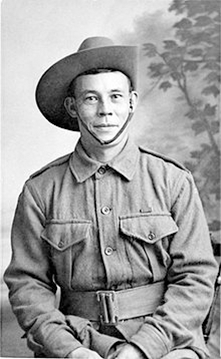
No target rifle club member was better known for his military prowess than Proserpine Rifle Club member William “Billy” Sing of Gallipoli fame. Private Sing DCM, 31st Battalion came from Clermont, Queensland where he was a kangaroo shooter. Private Sing enlisted in 1914, served at Gallipoli and later on the Western Front. Sing was an expert marksman who practiced the art of sniping. Sing is reputed to have had over 200 confirmed kills on his record with some claiming his record would be closer to 300.
Sing used the Short Magazine Lee Enfield (SMLE), No. 1 Mark III rifle which was standard issue for British troops including Australian forces. What made Sing’s rifle different was the application of the Martin optical sight. Soldiers using the optical sight had an advantage over those relying on the standard military “V” leaf sight because it gave better focal length and clarity of target. Sing’s spotter was renowned author Ion Idriess.
Billy Sing survived the Great War and returned to Australia in 1918 after having some very close calls and despite having been wounded numerous times. Sing’s military experience left him in a poor state of health. He was awarded the Distinguished Conduct Medal (DCM) for his service. Sing died on 19th May 1943 aged 57 years and is buried in the Lutwyche Cemetery in Brisbane.
Major Hugh Quinn
Another prominent Great War soldier was Major Hugh Quinn, 15th Battalion, Australian Imperial Force (AIF). At the time of his enlistment Hugh Quinn was resident in Townsville where he conducted his own business as a commission agent. Major Quinn was born in Charters Towers on 6th May 1888. He was a private in the Kennedy Regiment when the regiment was mobilised and sent on garrison duty to Thursday Island. He was one of several hundred men who volunteered to enlist in the 2nd Infantry, Australian Naval and Military Expeditionary Force. After this force was demobilised on its return to Australia from Thursday Island and New Guinea, Quinn applied for and was granted a commission in the AIF.

Major Quinn travelled to Gallipoli with the 15th Battalion where he saw action. Quinn and his men were ordered to hold a position which initially was a communications trench and eventually became a heavily contested position. Over a period of a week Quinn and his men held off repeated attacks. On 29th May the Turks detonated a mine under or near the Australian position killing many of Quinn’s men. The Turks took advantage of the confusion that followed and rushed Quinn’s position over-running it. Quinn led a counter attack which forced most but not all of the Turks to retreat.
Quinn was further ordered to launch an attack over open ground to clear the position of the remaining Turks. Major Quinn was killed while undertaking a reconnaissance to retake the position, shot in the head which resulted in his immediate death.
Quinn’s Post became known as the most contested position in the Anzac line.
After an extensive literature search it has been possible to establish that Major Quinn was a member of the Kennedy Regiment Rifle Club (KRRC) and was at one time the club handicapper. Given that Major Quinn was a Townsville resident (at the time of enlistment) with strong links to Charters Towers it is surmised that he may have also been a member of one of the rifle clubs in the Charters Towers area. While the KRRC was based upon membership from its parent regiment, the Kennedy Regiment and NQRA had very strong links. It is thought that Quinn would have participated in competition shooting which linked the two organisations. He also travelled to PNG with NQRA rifle club members when they were called out to perform active service.
A number of other North Queensland rifle club members were also killed at Quinn’s Post including Lieutenant Hutton Armstrong, Sergeant George Clarke, Lance Corporal Henry Foot, Lance Corporal Edward Kirby, Private Arthur Richardson, Corporal Albert Graffunder, Sergeant Frank (Francis) Storey and Sergeant Frederick Swain. All but two of these rifle club members were serving with 15th Battalion.
Sergeant David Emmett Coyne
David Emmett Coyne was born in March 1896 at Marian near Mackay in North Queensland. David Coyne was a farmer by profession and active member of the Marian Rifle Club at the outbreak of the Great War.
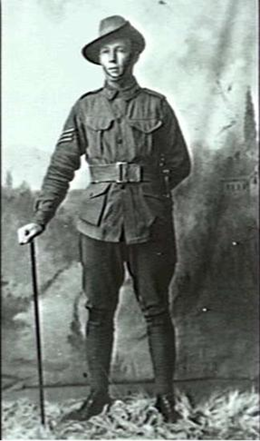
At age 20 in May 1916 Coyne sailed for Europe on board HMAT A49 Seang Choon with members of the Australian Army’s 31st Battalion, the Kennedy Regiment.
Coyne commenced his Army career as a private and over time rose to the rank of sergeant. Coyne was considered an expert in the use of Mills Bombs, more commonly called hand grenades. Coyne and his platoon guarded an important section of trench which attracted much attention from a German Machine Gun Section.
Coyne planned to move out on the night of 15th May 1918 to bomb the German position. In preparation for the assault he was testing a recently arrived consignment of Mills Bombs to assess the consignment’s reliability. In order to carry out the test he planned to throw a bomb over the trench parapet into no-mans-land where it was expected to explode harmlessly.
In reality what happened is the Mills Bomb hit the parapet top and fell back into the trench among Coyne’s platoon. Coyne yelled to his platoon “run for your lives boys” and then proceeded to try and find the bomb in the dark trench. Initially the search was unsuccessful and by the time he had located the bomb its time fuse had all but expired leaving no time to throw the menacing bomb over the parapet.
Coyne took the decision to throw himself onto the bomb knowing full well what the likely outcome was. In fact Sergeant Coyne received fatal injuries as the result of the explosion but saved his platoon by his action. This selfless action of what has been described as cold blooded courage initially led to a recommendation for the Victoria Cross.

After due consideration, the recommendation for the Victoria Cross was changed and Coyne was awarded the Albert Medal in Gold. The Albert Medal was named after Queen Victoria’s husband, Albert.
The decision to award the Albert Medal, the only one awarded to the Australian Imperial Force in the Great War, had its foundation in the fact that this act of bravery was not taken in the face of the enemy, a requirement for the awarding of the Victoria Cross. In 1949 the Albert Medal in Gold was replaced with the George Cross.
Sergeant Coyne is interred at Vignacourt British Cemetery, Plot 11, Row D, Grave No.6 Amiens, France 118.
Carr Brothers

Four Carr brothers, all members of the Halifax Rifle Club served in the Great War. All four brothers were members of Australian Light Horse units. John Edward Carr was a member of the 5th Light Horse, his brothers Arthur Percy, Edgar Norman and Charles Roland were members of the 11th Light Horse.
John Carr served on Gallipoli and the Western Front. Arthur, Edgar and Charles served on Gallipoli and later were involved in the legendary Light Horse charge at Beersheba.
Beersheba was no mere side show. Australians suffered a total of 67 casualties at Beersheba; 31 men killed and 36 wounded. 738 German and Turkish prisoners were taken. Beersheba broke Turkish control of the Gaza-Beersheba line and led to the capture of Jerusalem.
All four Carr men survived the war and returned home safely to their family.
Billy Sing, Hugh Quinn, David Coyne and the Carr Brothers are but a few examples of men who came forward from rifle clubs across Australia and volunteered their services during the Great War. World War II attracted a similar volunteer response and commitment from the Australian rifle clubs at the time.
On Remembrance Day rifle clubs around Australia acknowledge the sacrifice of all Australian service men and women from all conflicts.
LEST WE FORGET
Information contained within this article has been gathered from:
a. https://www.army.gov.au/our-heritage/traditions/remembrance-day
b. The Townsville Cenotaph World War 1 Soldiers by Carolyn Lee Larard & Maureen Newnham (2017)
c. NQRA’s History – ‘So You Went Target Rifle Shooting’ launched on 17th May 2019
d. The Riflemen – A history of the National Rifle Association of Australia 1888-1988 by Andrew J Kilsby (2013)
e. National Archives of Australia – World War 1 Soldier Records
f. ABC – ‘Dirty 500’ Queenslanders Honoured in WW1 Centenary Tribute
https://www.abc.net.au/news/2014-08-11/dirty-500-queenslanders-honoured-in-wwi-tribute/5663436
g. https://anzacportal.dva.gov.au/
h. Sing, Quinn and Coyne photographs are from the Australian War Memorial collection
i. Carr photograph is from the Halifax Rifle Club collection held at the Ingham Family History Association
j. Sergeant Coyne’s replica medals, donated by the author, are on display in the Hervey Range Shooting Complex clubhouse (Townsville)
k. Various newspaper articles located via TROVE
Author: Bruce A R Scott, President, National Rifle Association of Australia, 2 November 2021
